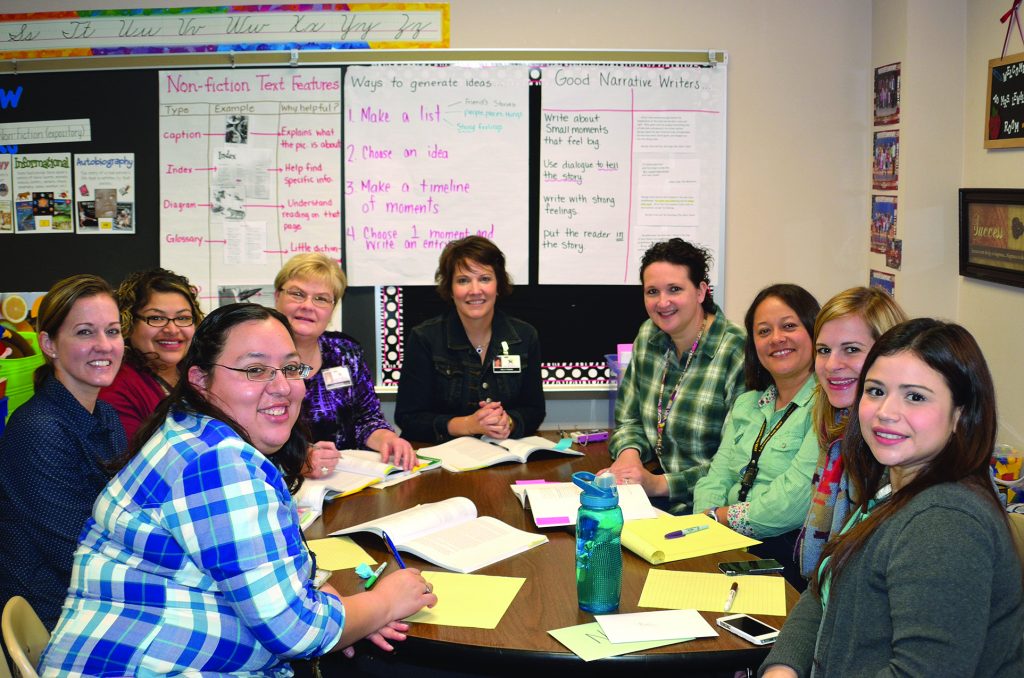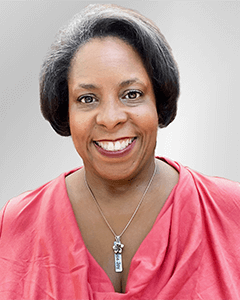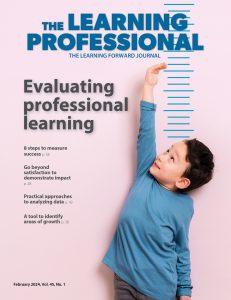To make professional learning more relevant to teachers—and to make sure learning opportunities are driven by data—the Hillsborough County Public Schools in Florida has given all schools a new template for identifying their goals, planning learning for teachers and recognizing when the targets have been reached. Read more to see how the district has put professional learning on everyone’s “radar.”
Teachers at Hammond Elementary School in Odessa, Fla.—part of the Hillsborough County Public Schools—used to primarily experience professional learning through online courses and by attending district-level sessions.
But ever since Principal Sheri Norkas used a new template to design a plan in which teachers learn more from their peers, she has noticed that teachers are more eager to try to new strategies. They are especially implementing practices involving student-led discussions and designed to increase engagement—a focus for the school this year.
“Teachers are excited to learn from each other and becoming more willing to share their own strengths, inviting peers into their classrooms,” Norkas says.
The template stems from the district’s work as part of the Redesign PD Community of Practice, facilitated by Learning Forward. Called RADAR, which stands for relevant, aligned, data driven and results driven, the template is based on the Standards for Professional Learning and gives schools a systematic way to identify their professional learning goals and a plan for how they are going to meet them.
“If you’re going to have a training that is truly relevant, it is really modeled after adult learning theory,” says Jamalya Jackson, the district’s director of professional development.
Vision
Providing growth and support for all
Purpose Statement
Inspiring, developing, and supporting learning and leadership to promote success for all
Goals
All teacher professional learning experiences district wide and school based will meet common, objective system-wide criteria
Decision rights across district staff for what is required, recommended or optional for PD are well-defined and understood by all stakeholders
Professional development at school sites is data driven and provides follow-up for teachers. Based on the Teaching, Empowering, Leading and Learning survey we expect to see an increase in the percentage of this happening district wide.
At the top of the template, principals—sometimes in partnership with other instructional leaders at the school—state three instructional goals. They identify the data they used for choosing the goals and specify how they will follow up with teachers to see whether practices are being implemented.
“If I had to pick a box that was most important, it would be ‘results-driven,’” Jackson says. “This is what you expect to see in classrooms.”
At Lanier Elementary School in Tampa, Principal Rachel O’Dea used the RADAR process to design Systems of Support, which include teacher goal setting, coaching, non-evaluative feedback, online learning, learning walks and lesson studies.
“We are continuously changing our offerings depending on students’ data, teacher data, teacher goals and our instruction priorities,” she says, adding that teachers “are at the point where they are requesting certain learning experiences, helping facilitate the learning of others and mastering learning.”
As a result of teachers adopting a “growth mindset,” O’Dea says, instruction is better aligned to state standards and formative student achievement data is higher than it’s ever been.
‘It’s a process’
With HCPS being one the largest districts in the community—and the eighth largest in the nation—Jackson says she initially wondered if her team could relate to the experiences of other districts, aside from the New York City Schools. But the community gives everyone a “thought partner,” she says, and she and her team members now feel completely comfortable contacting colleagues from other districts to exchange ideas.
“We all come from different spaces, but there is a lot of commonality when you just think about education,” she says. “[Learning Forward] has put the structure in place in terms of the [Cycle of Inquiry] that it doesn’t matter if it’s 200 schools or 500.”
Jackson’s team introduced the template to principals last summer, and they turned their plans into their area supervisors in the fall. With 250 schools, there’s variety in the way schools are using the template. While some are sharing the plans with teachers, others are just referring to the overall goals. The plan for next year is to provide every school with feedback on its plan.
“It’s understanding that this is not just a form; it’s a process,” Jackson says. “It’s how do we move from professional development to high-quality professional learning?”
Sometimes teacher leaders are providing the training, and sometimes a teacher is working in partnership with someone at the district level. But Jackson added that RADAR is a signal to her team that schools will follow through with supporting teachers in using the practices or skills they are learning.
“We will not come out [to a school] without ensuring that there is a clear plan for implementation and support during that implementation phase,” she says.
As with Hammond and Lanier, teachers are noticing a shift from how they used to experience professional learning.
“Teachers are commenting that on the fact that PD is more personalized for them at their site,” Jackson says. “Instead of searching a catalog and coming to something at the district level, the training is being offered at their site.”
Some schools are using “learning walks” to highlight good practices and give teachers a chance to learn from each other. At Hammond, Norkas received a note from a teacher expressing how much she appreciated the experience.
“I am so thankful these outstanding teachers opened up their classrooms. Of all my years teaching, this has had the most influential impact on my classroom instruction and student learning,” wrote Melissa Hays, who teaches 4th grade math and science. “I was able to take ideas and immediately implement them in my classroom. I have already noticed an increase in student engagement. I cannot wait to be able to learn from more of my colleagues.”








